Found a total of 10000 related content
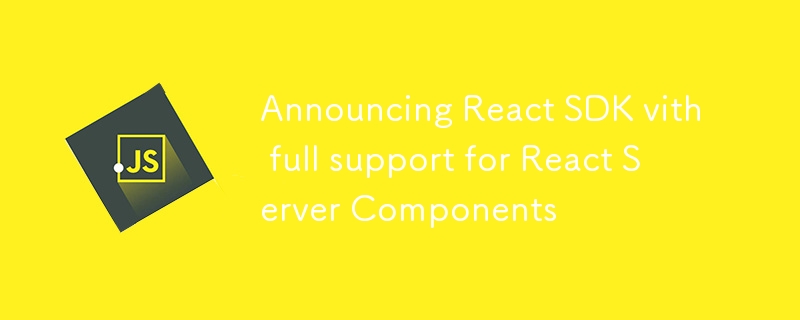
Announcing React SDK vith full support for React Server Components
Article Introduction:The introduction of the App Router paradigm in Next.js brought significant changes to the way developers build and structure applications. While it opened the door to exciting features like React Server Components (RSC) and finer control over renderi
2024-11-24
comment 0
1080

Implementing single sign-on across PHP applications: a cookie-based solution
Article Introduction:This document aims to provide a single sign-on (SSO) solution based on cookie sharing for seamless authentication between two separate PHP applications, such as Symfony apps and DokuWiki. By using cURL to simulate login and share cookies, users can automatically log in to another app by simply logging in in one app, avoiding the repeated authentication process and improving user experience. This article will introduce the implementation method of this solution in detail, and provide sample code and precautions to help developers quickly build a single sign-on system across applications.
2025-08-17
comment 0
348

Top 10 PHP REST API Frameworks 2025
Article Introduction:A PHP framework is a collection of pre-written code libraries, tools, and best practices that provide a structured and standardized way to build web applications using the PHP programming language. It simplifies the development process by offering re
2024-12-03
comment 0
801
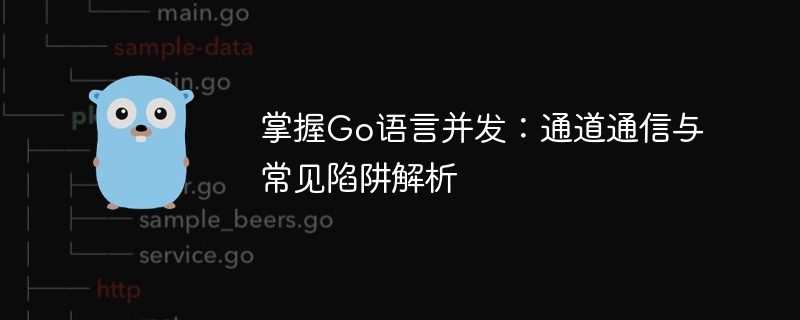
Master Go language concurrency: channel communication and common trap analysis
Article Introduction:This tutorial explores the concurrent communication mechanism between goroutine and channel in Go language. Through actual code examples, we analyze in detail how to build messaging between multiple coroutines, especially dealing with deadlock problems caused by uninitialization of the channel. The article also covers the model of "two-way" communication in Go, and explores the possibilities and limitations of generic channels, aiming to help developers build concurrent applications efficiently and securely.
2025-08-26
comment 0
190
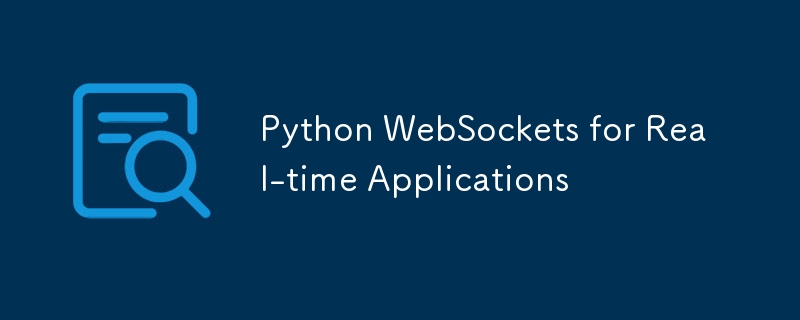
Python WebSockets for Real-time Applications
Article Introduction:WebSocket is used for real-time communication. Because it supports persistent connections and two-way data transmission, it can reduce latency and server pressure compared to HTTP polling. Common Python libraries include websockets, Socket.IO, Tornado, and FastAPI. To build services, install libraries and write asynchronous processing logic; pay attention to connection management, exception handling, security and performance optimization in applications.
2025-07-20
comment 0
517
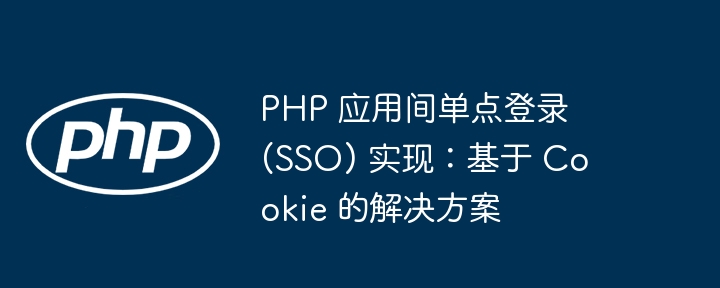
PHP single sign-on (SSO) implementation: a cookie-based solution
Article Introduction:This document aims to provide a way to implement single sign-on (SSO) between two PHP applications, such as Symfony applications and DokuWiki. The core idea is to use cURL to simulate login and share cookies between applications to avoid repeated login between different applications. The article will provide details on how to simulate login using cURL, and how to handle cookies to keep sessions in place and resolve possible session loss issues.
2025-08-17
comment 0
435

Introducing STRICH: Barcode Scanning for Web Apps
Article Introduction:Efficient and convenient web barcode scanning: Use STRICH library to build web applications
This article will introduce how to use the STRICH JavaScript library to implement real-time one-dimensional/two-dimensional barcode scanning function in web applications, and explain the advantages of barcode scanning of web applications over native applications.
Core advantages of STRICH library:
Real-time scanning: The STRICH library supports all commonly used one-dimensional and two-dimensional barcode types and uses WebGL and WebAssembly technologies to achieve efficient and reliable scanning.
Simplified development: Just develop for a single platform (Web browser), simplifying the development process and reducing development costs.
Easy deployment: no App Store review required, department
2025-02-08
comment 0
1335
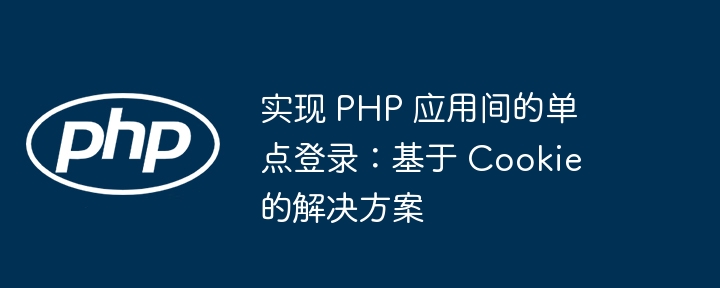
Implementing single sign-on between PHP applications: a cookie-based solution
Article Introduction:This document aims to provide a way to implement single sign-on (SSO) between two PHP applications, such as Symfony applications and DokuWiki. The core idea is to use cURL to simulate login and share cookies between applications to avoid repeated login between different applications. The article will provide a detailed description of how to use cURL scripts to simulate the login process, and how to handle cookies to keep the session state and resolve cookie-related issues that may be encountered.
2025-08-17
comment 0
885

How do I define an Eloquent model? (php artisan make:model)
Article Introduction:The most direct way to define an Eloquent model in Laravel is to use the Artisan command phpartisanmake:model, which can quickly generate model classes and associate corresponding data tables. 1. Run phpartisanmake:modelPost to create a model file, which is saved in the app/Models directory by default (you need to confirm that the directory exists and the namespace is correct). 2. Use the -mf parameter to generate models, migrate files and model factories at the same time, making it easier to build a complete structure from scratch. 3. If the model path is customized to app/Models/Blog/Post.php, you can use phpartisanmake:model
2025-06-19
comment 0
974

Deeply understand the execution mechanisms and common pitfalls of __new__ and __init__ in Python
Article Introduction:__new__ and __init__ are two key methods for object creation and initialization in Python. __new__ is responsible for the creation of the instance, while __init__ is responsible for the initialization of the instance. The article will dig into their call order, behavior in the inheritance chain, and the correct way to use __new__, especially avoiding the common traps caused by manually calling __init__ in __new__ or returning non-instance objects, helping developers build robust Python classes.
2025-08-07
comment 0
743
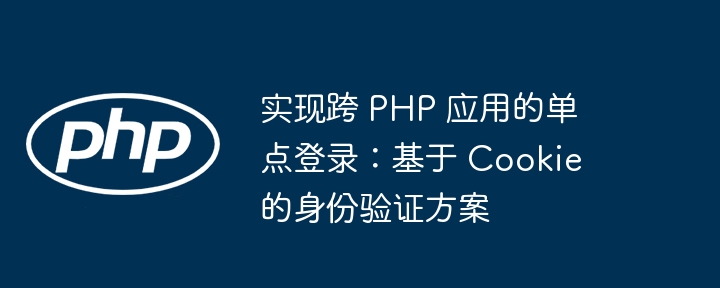
Implementing single sign-on across PHP applications: Cookie-based authentication scheme
Article Introduction:This document aims to provide a cookie-based authentication scheme to enable single sign-on (SSO) between two separate PHP applications, such as the Symfony app and DokuWiki. By sharing cookie information, users can access another app without logging in again. This article will provide a detailed introduction to how to simulate login using cURL and solve the problem of cookie session retention, ultimately achieving a seamless user experience.
2025-08-18
comment 0
272

PHP Form Submission and Page Redirection: FAQs and Security Practice Guide
Article Introduction:This article aims to solve the common problem of page automatic refresh in PHP form submission, and explores in-depth the correct way to obtain form data ($_POST) in PHP, the importance of code execution order, and how to achieve effective page redirection. In addition, the article highlights the key considerations in building a secure login system, including avoiding hard-coded passwords and adopting a more secure authentication mechanism, providing developers with the professional guidance needed to build stable and secure web applications.
2025-08-08
comment 0
294

Solve the problem of failed redirection after logging in with Azure PHP web app: Configuration, Authentication, and Best Practices
Article Introduction:This article explores the issue where Azure PHP Web applications cannot be redirected correctly after logging in and provides a multi-dimensional solution. It mainly covers the application of web.config files in URL rewriting under Windows App Service, as well as the use of Azure AD to achieve a safe and reliable user authentication and redirection mechanism. At the same time, the article emphasizes the key considerations and common pitfalls of PHP header() redirection, aiming to help developers build stable and efficient Azure PHP applications.
2025-08-08
comment 0
429
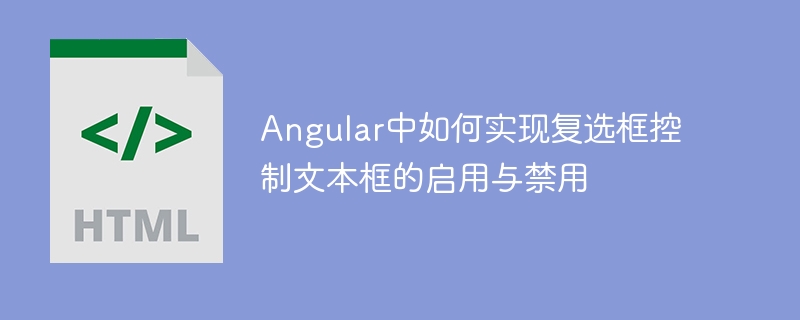
How to implement check boxes to control the activation and disabling of text boxes in Angular
Article Introduction:This article introduces in detail how to use data binding and event processing mechanisms in Angular applications to implement the function of dynamically controlling the enablement and disabling of text input boxes in a check box. The two-way data binding of the check box is realized through [(ngModel)], combined with (change) events to listen for the status changes of the check box, and dynamically update the disabled status of the input box using the [disabled] attribute binding, providing clear sample code and implementation steps to help developers efficiently build interactive forms.
2025-08-18
comment 0
215

Using Python with Go: Technical Feasibility and Practical Considerations
Article Introduction:This article explores the possibility of mixing Python and Go in the Google App Engine (GAE) environment. Although the two languages cannot be directly mixed in the same version, interaction between different versions can be achieved through HTTP communication. In addition, you can also use Go or Java to build backend services and call them by Python applications to improve the performance of specific tasks. The article elaborates on the implementation method in detail and emphasizes relevant precautions.
2025-08-11
comment 0
672

Creating a Visualization App Using the Google Charts API and AngularJS
Article Introduction:Core points
AngularJS, Google's popular JavaScript framework, can be used to build dynamic visual applications that leverage the Google Charts API. Angular's two-way binding feature allows charts to change dynamically based on data and user input.
Creating a visual application with AngularJS involves several steps, such as setting up Angular, building an application, and creating a chart. This process requires writing code in HTML and JavaScript, using Angular's MVC design pattern, and integrating the Google Charts API for visualization.
The Google Charts API provides various graphs
2025-02-22
comment 0
949

PHP Web Application and Tally Prime Data Integration Policy Guide
Article Introduction:This article aims to provide developers with a comprehensive guide to data exchange of PHP web applications with Tally Prime. We will explore three main integration methods: direct API integration based on Tally Definition Language (TDL), generating Tally compatible XML files for manual import, and leveraging desktop middleware applications as a bridge. Each method has its own unique advantages and disadvantages and applicable scenarios, helping developers choose the most appropriate solution according to project needs and realize two-way synchronization of business information such as sales data.
2025-08-20
comment 0
675

WordPress PHP version upgrade in Docker environment: Guidelines and practices
Article Introduction:When upgrading the PHP version of WordPress in a Docker environment, the core principle is not to modify it in the running container, but to follow the immutable infrastructure concept of containerized applications. The correct way to do this is to select or build a new Docker image with the required PHP version preinstalled and then replace the old container. This not only avoids runtime errors, but also ensures the cleanliness, repeatability and maintainability of the environment, thereby effectively solving common problems such as the inability to find docker-entrypoint.sh file.
2025-08-04
comment 0
389
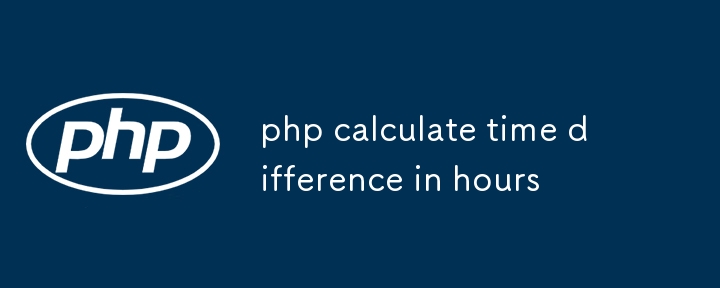
php calculate time difference in hours
Article Introduction:In PHP, the most recommended way to calculate the hour difference between two times is to use the DateTime and DateInterval classes. First create two DateTime objects, then call the diff() method to obtain the DateInterval object, then convert the days into hours and add the hour part; 1. Use DateTime and DateInterval: the code is clear and easy to maintain, suitable for scenarios that require high readability and precise control; 2. Use timestamps to directly calculate the difference: obtain the timestamp through strtotime(), which is suitable for situations where the date format is not high, but you need to pay attention to using abs() to avoid negative values, and choose round(
2025-07-14
comment 0
287
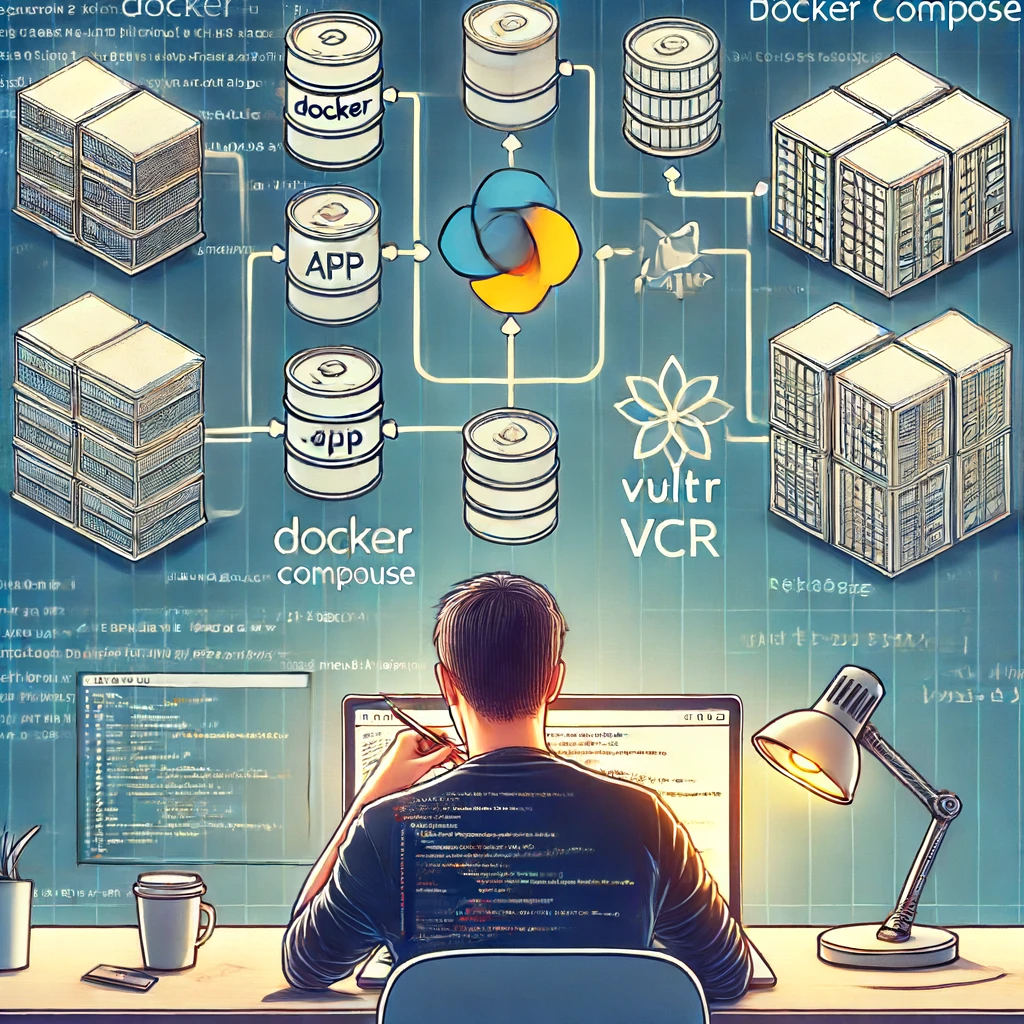
The Functional Depth of Docker and Docker Compose
Article Introduction:Build multi-container Flask app using Docker Compose and Vultr container registry
Docker Compose allows users to run and define multi-container applications using a single configuration file. It simplifies the process of setting up and managing multiple containers, making it easier to develop, test, and deploy applications. This article will guide you to create a Flask application with two containers, manage Docker images of your application using the Vultr Container Registry (VCR), and manage multiple containers with the multi-container functionality of Docker Compose.
Creation of sample application
The following steps will guide you to create a sample application:
Through the Vultr Customer Portal
2025-02-08
comment 0
817


















